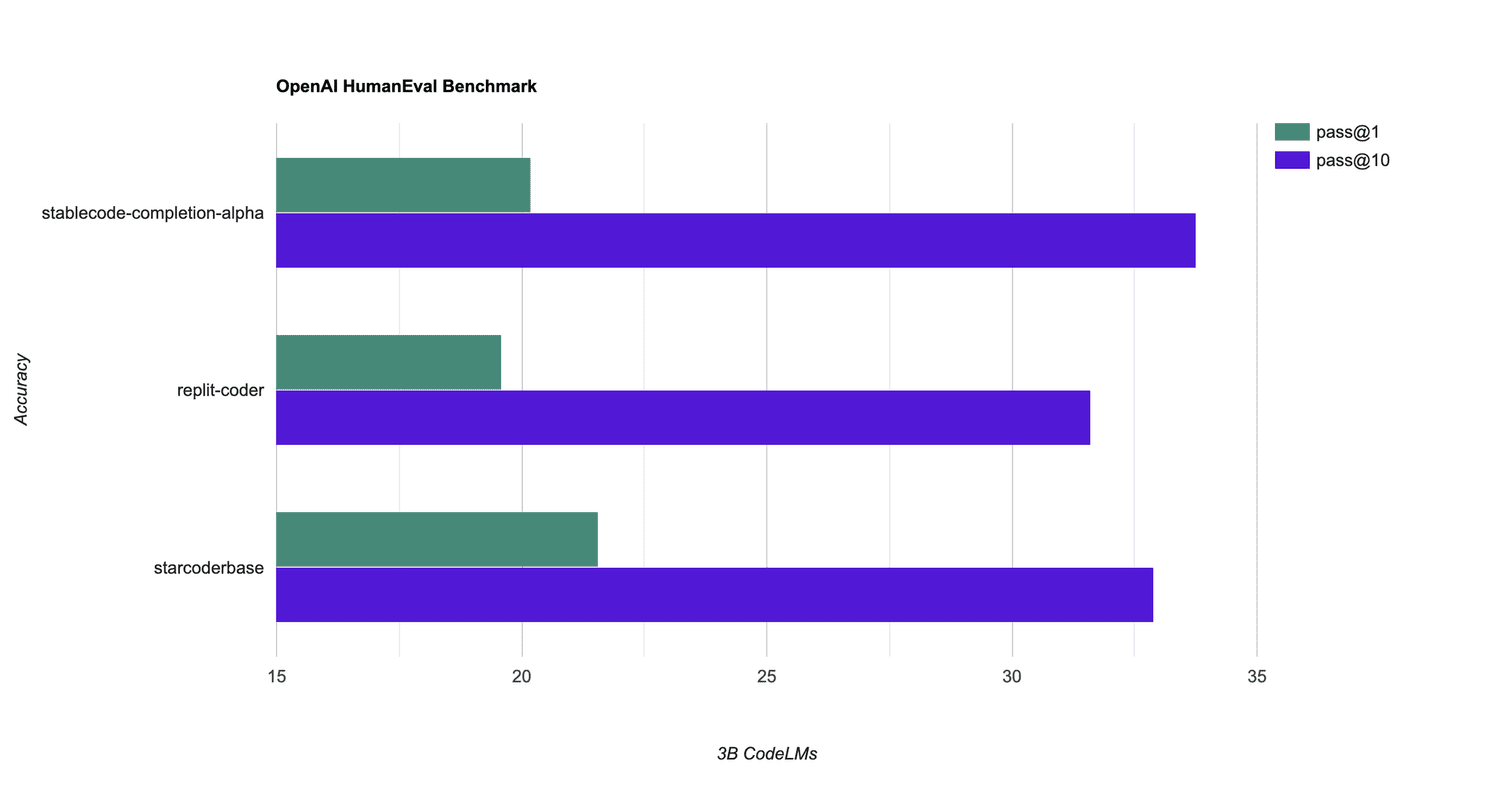
Image created by author with Midjourney Overview
In the ever-evolving landscape of software development, the quest for efficiency and accessibility has led to the creation of various tools and platforms. Among the latest innovations is StableCode, a Large Language Model (LLM) generative AI product by Stability AI. Designed to assist both seasoned programmers and aspiring developers, StableCode promises to revolutionize the way we approach coding.
StableCode, the AI-powered assistant from Stability AI, can perform intelligent autocomplete, is able to respond to instructions, and can manage long spans of code. It incorporates three specialized models, each catering to different aspects of the coding process. Trained on an extensive dataset of over 560 billion tokens from diverse programming languages, StableCode aims to boost programmer productivity and lower barriers to entry in the field.
While existing conversational AI assistants like Llama, ChatGPT, and Bard have demonstrated capabilities in code writing, they are not optimized for the developer experience. StableCode joins tools like GitHub Copilot and other open-source models, offering a more tailored and efficient coding experience. This article explores the unique features, underlying technology, and potential impact of StableCode on the developer community.
StableCode Details
StableCode is constructed from three specialized models:
- Base Model: Trained on a diverse set of programming languages, including Python, Go, Java, JavaScript, C, markdown, and C++.
- Instruction Model: Tuned for specific use cases to help solve complex programming tasks.
- Long-Context Window Model: Built to handle more code at once, allowing the user to review or edit up to five average-sized Python files simultaneously.
The standard autocomplete model, StableCode-Completion-Alpha-3B-4K, offers single and multi-line recommendations as developers type, enhancing efficiency and accuracy.
The instruction model, StableCode-Instruct-Alpha-3B, leverages natural language prompts to perform coding tasks, allowing for more intuitive interactions with the code.
With a long context window of up to 16,000 tokens, StableCode can manage extensive code bases, providing a more comprehensive view and control over the coding process.
StableCode's training involved significant filtering and cleaning of the BigCode data. The model underwent successive training on specific programming languages, following a similar approach to natural language domain modeling.
Unlike other models that weigh current tokens more than past ones, StableCode uses rotary position embedding (RoPE), ensuring a more balanced consideration of code functions without a set narrative structure.
StableCode's unique features and technology promise to significantly enhance developer workflows. With twice the context length of most existing models and carefully tuned models, it offers greater efficiency and precision.
By providing an intelligent and accessible platform, StableCode has the potential to lower the barrier to entry for new programmers, fostering a more inclusive and diverse developer community.

HumanEval Benchmark Comparison with models of similar size(3B)
Source: Stability AI Conclusion
StableCode represents a significant step in the evolution of coding assistance. Its unique combination of specialized models, intelligent autocomplete, and advanced technology sets it apart from existing tools. By offering a more tailored and efficient coding experience, it stands as a revolutionary tool in the software development landscape.
More than just a coding assistant, StableCode embodies Stability AI's vision to empower the next billion software developers. By making technology more accessible and providing fairer access to coding resources, StableCode is poised to help shape the future of software development and inspire a new generation of programmers.
Matthew Mayo (@mattmayo13) is a Data Scientist and the Editor-in-Chief of KDnuggets, the seminal online Data Science and Machine Learning resource. His interests lie in natural language processing, algorithm design and optimization, unsupervised learning, neural networks, and automated approaches to machine learning. Matthew holds a Master's degree in computer science and a graduate diploma in data mining. He can be reached at editor1 at kdnuggets[dot]com.
- Unveiling Midjourney 5.2: A Leap Forward in AI Image Generation
- Unveiling the Potential of CTGAN: Harnessing Generative AI for Synthetic…
- Unveiling the Power of Meta's Llama 2: A Leap Forward in Generative AI?
- Fear not, for AI coding is here to help you!
- GPT-Engineer: Your New AI Coding Assistant
- 7 Must-Know Python Tips for Coding Interviews